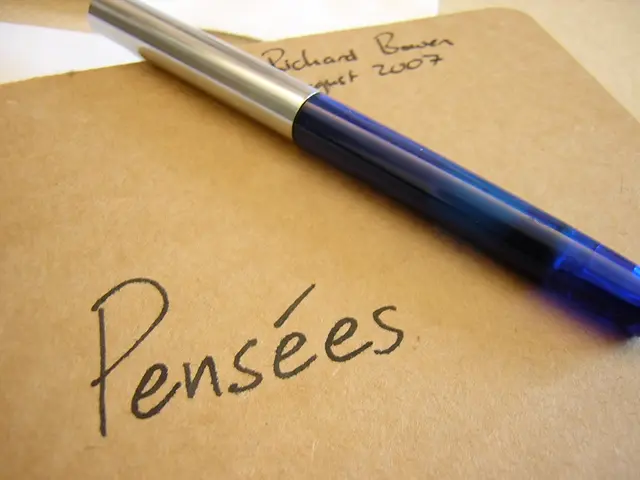Bees select their queen through a process of selection and mating flights, with the existing queen leaving the hive to allow a new queen to take her place.
In the intricate dance of nature, the meticulous selection process of a honeybee colony's queen reveals one of the most fascinating phenomena of the natural world. As countless bees bustle within their hive, each carries out a distinct role in maintaining colony health, productivity, and survival. At the heart of this thriving community lies the queen bee, a singular and vital figure whose selection sparks wonder and reveals the brilliance of natural selection.
Understanding this process enlightens the mysterious world of honeybee behavior while emphasizing the ingenuity of the evolutionary process that ensures the survival of this species.
A Perfect Hierarchy Within the Hive
To appreciate how bees choose the queen, it is essential to comprehend the intricate social structure of a honeybee colony. A typical hive is composed of three main castes – the queen, worker bees, and drones – each integral to colony existence.
- The Queen Bee: As the reproductive powerhouse, she lays up to 2,000 eggs daily during peak season. Her distinctive pheromones shape the behavior and duties of the other bees.
- Worker Bees: These sterile females handle duties ranging from foraging for nectar and pollen to caring for larvae, maintaining the hive, and defending it against threats.
- Drones: Male bees who exist exclusively to mate with a queen from another colony, ensuring genetic diversity.
When the reign of the current queen comes to an end – due to aging, illness, unsuitability, or other reasons – the worker bees initiate the intricate process of selecting a new queen.
A Delicate Balance: The Step-by-Step Process
The sequence of selecting a new queen begins with the workers identifying the need for one. Below is an overview of the progression:
- Recognizing the Ominous Sign: The workers analyze the condition of the current queen: weak pheromones and declining health or fertility generally signal the need for a replacement. During swarming, the workers initiate the process of raising a new queen to lead the divided colony.
- Larvae Selection: Worker bees carefully select potential queen candidates from newly hatched female larvae, endeavoring to distinguish the chosen few from the masses of worker bee larvae.
- Royal Treatment: Chosen larvae receive exclusive feedings of royal jelly, a nutrient-rich substance produced by worker bees, rather than typical brood food.
- Towering Housing Development: Selected larvae are housed in elongated structures called queen cells, providing ample space for their growth and development.
- Emergence of the New Queen: In approximately 16 days, the new queen emerges. If multiple queens are raised, the first out competes against her rivals in brutal and lethal duels until only the strongest, fittest queen remains.
The Tactile Symphony of Pheromones
Honeybee behavior is governed by pheromones, the colony's chemical communication system. The pheromones of the queen impact the actions and roles of the other bees. When the queen's pheromones diminish, the workers recognize the need for a new queen.
Moreover, pheromones guide the new queen during her mating flight, leading her to her potential mates in midair, thus ensuring genetic diversity.
The Practical Implications for Beekeepers
For beekeepers and enthusiasts, grasping the intricacies of honeybee behavior empowers them with valuable insights into maintaining thriving hives. By understanding the factors driving queen selection, beekeepers can:
- Monitor and assess the health of their queen to predict the likelihood of replacement
- Intervene in queen rearing if natural selection fails in small or weakened colonies
- Coordinate colony expansion, thus preventing overcrowding and preserving the health of both colonies
Comparisons: Queens and Workers in Unison
The divergent development paths of honeybees illuminate intriguing insights into the power of nutrition and care in shaping a bee's role within the hive.
Larvae are carefully groomed and fed differently, ultimately influencing whether a bee matures into a queen or a worker.
A Lesson in Evolution: Studying the Dance of Nature
The tale of how bees choose the queen reveals the efficiency of natural selection. The process demonstrates the finest adaptability in insect behavior and offers lessons in resilience, cooperation, and sustainability.
Witnessing the Fascinating Dance of Life
Every step of the queen selection process underscores the complexity of honeybee behavior, reminding us of the intelligence and organization that even the smallest creatures can exhibit.
Next time you glimpse a hive, take a moment to appreciate the intricate microcosm it contains – a world where each bee plays its role, and the new queen's reign begins with an incredible story of survival, harmony, and evolution.
Sources
[1] Al-Sanaani, N. (2020). Bee Rearing and Queen Rearing: An Overview. Department of Biology, The Hashemite University.
[2] Vor unmittelbaren Todesgefahr. (2020). Queenright vs Queenless: Misconceptions and Reality. Swiss Bee Journal.
[3] Weekley, T., & Ratnieks, F. L. W. (2011). The queen decision in honeybee swarms. Journal of Experimental Biology, 214(17), 2797-2805.
[4] Isaia, S., & Woyke, J. K. (2015). A comprehensive analysis of queenless honey bees reveals hormonal and social changes in response to social death. Proceedings of the National Academy of Sciences of the United States of America, 112(36), 11579-11584.
- As a beekeeper, understanding how bees choose their queen empowers me to monitor and assess the health of my hive, predict the likelihood of queen replacement, and intervene when necessary to ensure colony survival.
- The selection process for a new queen bee emphasizes the vital role that pheromones play in honeybee behavior, guiding the selection of potential queen candidates, their growth and development, and even their mating flights.*皇 Freshly emerged from the royal jelly-filled queen cell, a new queen bee faces fierce competition against her rivals in midair, demonstrating the brilliant resilience and adaptability that ensure the survival of this species in the intricate dance of nature.








